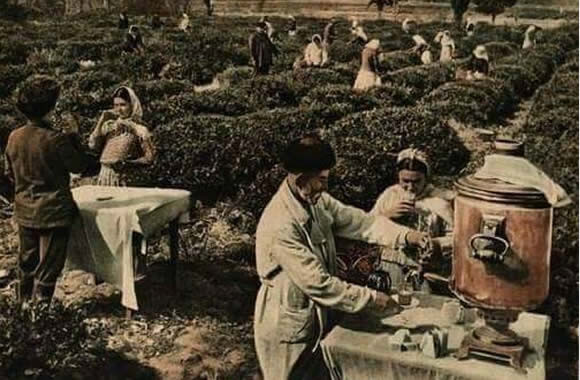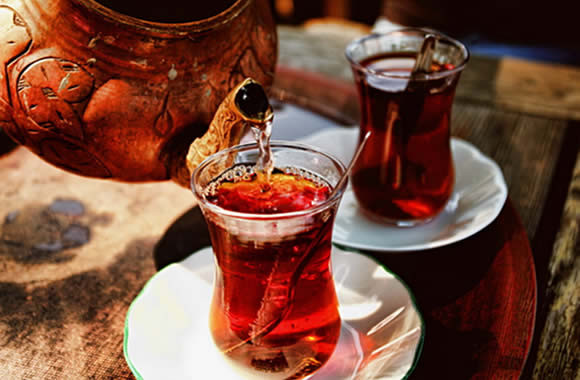In the ancient times, tea was the second most consumed beverage after water in the world. According to one legend about tea, that has 5 thousand years of history, a servant of the Great Chinese Emperor Shen Nung boiled water outdoors when a tea leave fell into the water and the spreading odor pleased the emperor. The emperor tasted the water and liked the taste very much. Since then, tea has turned to be an irreplaceable beverage in China and all over the world. However, today’s tea-making method was invented 4 thousand years ago. Today, there are about 1500 tea sorts in the world.
The etymology of the word “tea” derives its origin from Chinese language. There are 2 pronunciation forms for the same word. It is “cha” for Mandarin dialect and “te” for Amoy dialect. The Mandarin form was firstly used by portuguese merchants in 1559. Owing to these merchants, the word is “chai” in Russian and Turkish, “cha” in Farsi and “shai” in Arabic similar to the Mandarin dialect. Later, Holland merchants spread Amoy version of pronunciation in Europe and western languages owned this latter dialect: “tea” in English, “the” in French, “te” in Spanish and “tee” in German.
In the early 17th century Holland and Portuguese merchants brought the Chinese tea to Europe for the first time. Toward the mid-century, the Netherlands and France were leading first 2 countries for tea consumption. America, first met the plant thanks to Peter Stuyvesant, produced one-time used tea bags in 1908 what are now widely used throughout the world.


The tea was planted in Caucasus in 1940s. Since the experiments were successful, it was decided to increase the number of plants in the region from 1870s. Supposedly, the first sorts brought to Azerbaijan in 1892-1898 were planted in Lankaran and Car-Balakan. As the result was positive, tea growing fields had been enlarged in Lankaran and the first plant was built in 1937 there. After these, tea production has become massive in Azerbaijan.
In 1970-80s, 15 tea-producing plants were constructed and started operating in Azerbaijan. The tea production reached its peak in the middle of 1980s, when it made up 8.6 tonnes and overall territory of tea fields was 13.4 ha. Azerbaijan met 8-10% of the demand in the whole Soviet Union that had a total population of 300 million. In those times, more than 10 factories had been operating in the southern Azerbaijani regions to process the tea, while 2 enormous factories with thousands of workers were specialized in tea packaging in Baku and Lankaran.
Currently, leading worldwide tea producers are India, Sri-Lanka, China, Turkey, Kenya, Indonesia, Malaysia and Vietnam. Lankaran, Astara, Masalli and Zagatala are the main tea-growing regions in Azerbaijan.